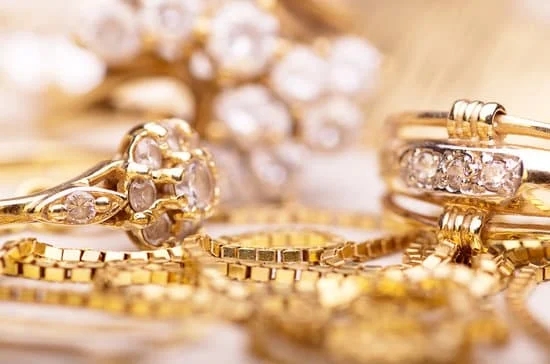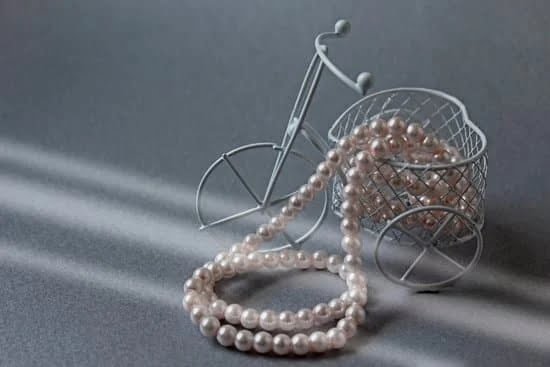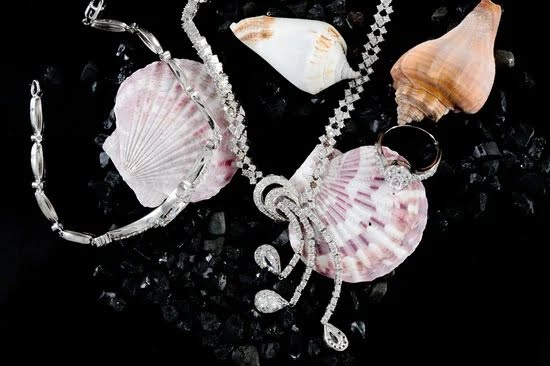The ancient Egyptians were well-known for their intricate and beautiful jewelry, which played a significant role in their society. From amulets to elaborate headdresses, jewelry was not only a symbol of wealth and status but also held religious and magical significance. In this article, we will explore how the ancient Egyptians created their fine jewelry, from the materials and techniques used to the design and style that still influences modern jewelry today.
Ancient Egyptian jewelry was not only a form of personal adornment but also a reflection of their culture, beliefs, and social structure. It served as a means of protection in this life and the afterlife, as well as a way to display one’s status. The art of jewelry making was highly revered in ancient Egypt and held great importance in both daily life and religious ceremonies.
To create their fine jewelry, the ancient Egyptians utilized a variety of materials such as gold, silver, semi-precious stones, faience, glass, and beads. Their mastery in metalworking and gem-cutting allowed them to produce exquisite pieces using sophisticated techniques and tools. Understanding the materials used and the craftsmanship involved provides insight into the skill and creativity of these ancient artisans.
Their innovative designs influenced by nature, mythology, and religion reflected the symbolism deeply ingrained in Egyptian culture. It is fascinating to see how these elements continue to inspire modern jewelry design today. Throughout this article, we will uncover the rich history behind ancient Egyptian jewelry-making, its importance in society, preservation over time, and its lasting legacy on contemporary fashion.
Significance and Symbolism of Jewelry in Ancient Egypt
Symbolism and Status
Jewelry played a significant role in Ancient Egyptian society, with both the wealthy and the common people adorning themselves with various ornaments. For the elite, jewelry was not only a symbol of wealth and status, but it also held religious and magical significance. Amulets, for example, were commonly worn to provide protection or to invoke specific blessings from the gods. The type of jewelry worn by an individual also conveyed their social standing and occupation.
Religious and Spiritual Importance
In addition to its social and economic significance, jewelry in Ancient Egypt also had deep spiritual meaning. Many pieces of jewelry were adorned with symbols representing various deities and aspects of Egyptian mythology. For instance, the scarab beetle symbolized rebirth and regeneration, while the ankh represented life. This symbolism tied into their belief in the afterlife, where it was thought that wearing certain types of jewelry would protect them on their journey to the underworld.
Cultural Identity
Beyond its religious and status-related significance, jewelry served as a means for individuals to express their cultural identity. Different regions within Egypt had their own distinct styles and designs when it came to crafting fine jewelry. These unique designs not only reflected regional differences but also demonstrated artistic creativity and skill mastery among ancient artisans.
The use of fine jewelry as a form of expression was integral to Ancient Egyptian society, with its symbolism deeply rooted in religious beliefs and cultural identity. Understanding these aspects offers valuable insight into how did the ancient Egyptians create fine jewelry that continues to captivate modern audiences today.
Materials Used in Ancient Egyptian Jewelry Making
The ancient Egyptians were known for their exquisite and intricate jewelry, crafted using a variety of materials. These materials were not only chosen for their aesthetic qualities, but also held symbolic significance in the ancient Egyptian culture. Some of the most commonly used materials in ancient Egyptian jewelry making included:
1. Gold: Gold was highly prized by the ancient Egyptians and was often associated with the sun god Ra. It was used to create elaborate necklaces, bracelets, rings, and amulets, showcasing the wealth and status of the wearer.
2. Precious Gemstones: Gemstones such as lapis lazuli, turquoise, carnelian, and amethyst were favored by ancient Egyptian jewelry makers for their vibrant colors and believed protective properties. These gemstones were often incorporated into jewelry designs to bring luck, protection, and spiritual significance to the wearer.
3. Faience: This colorful ceramic material was widely used in ancient Egypt to create beads and amulets. The bright blue or green faience beads were often strung together to make intricate necklaces and bracelets.
4. Copper: While not as precious as gold, copper was a commonly used metal in ancient Egyptian jewelry making. It was often combined with other metals such as silver or gold to create striking two-tone designs.
The process of sourcing and working with these materials required advanced craftsmanship and skill from ancient Egyptian artisans.
From mining and refining metals to carving intricate gemstones, the art of creating fine jewelry in ancient Egypt required precision and expertise. Artisans utilized a range of tools including chisels, drills, hammers, tongs, molds, and polishing stones to manipulate these materials into stunning pieces of wearable art.
Techniques and Tools for Crafting Fine Jewelry
Ancient Egyptian jewelry is known for its intricate designs and fine craftsmanship. But how did the ancient Egyptians create such stunning pieces of jewelry? The answer lies in their use of advanced techniques and specialized tools for crafting fine jewelry.
One technique used by ancient Egyptian jewelers was granulation, which involved heating small beads of precious metal until they fused together to form a larger piece. This allowed them to create elaborate patterns and designs on their jewelry. Another common technique was filigree, where thin threads of metal were twisted and soldered together to create delicate, lacy patterns.
In terms of tools, ancient Egyptian jewelers used a variety of implements including saws, chisels, drills, hammers, and files. They also developed specialized tools such as bow drills for piercing holes in gemstones and metals, as well as molds for shaping molten metal into intricate forms. These tools, combined with the skill and expertise of the craftsmen, allowed the ancient Egyptians to produce high-quality jewelry that still astounds us today.
| Techniques Used | Tools Used |
|---|---|
| Granulation | Saws, Chisels |
| Filigree | Drills, Hammers |
| Bow Drills | Molds |
Design and Style of Ancient Egyptian Jewelry
Ancient Egyptian jewelry is renowned for its exquisite design and style, reflecting the artistry and sophistication of the civilization. The craftsmanship and attention to detail in ancient Egyptian jewelry have been a source of inspiration for modern designers and artisans.
Intricate Symbolism
The design of ancient Egyptian jewelry was not only aesthetic but also deeply symbolic. For example, the use of amulets in jewelry served a protective function, with each symbol representing a specific deity or offering protection against a particular danger. The use of symbolism in ancient Egyptian jewelry reflects the spiritual beliefs and cultural values of the society.
Use of Precious Stones and Metals
Ancient Egyptians were skilled in working with precious materials such as gold, silver, lapis lazuli, turquoise, and carnelian. These materials were not only chosen for their beauty but also for their symbolic meaning. The vibrant colors of these stones were believed to embody specific qualities or powers, adding another layer of meaning to the jewelry.
Elegant and Timeless Designs
The design of ancient Egyptian jewelry is characterized by its elegance and timelessness. Pieces often featured intricate motifs such as lotus flowers, falcons, snakes, and scarabs. These designs were meticulously crafted to create striking pieces that showcased the skill and artistry of ancient Egyptian jewelers.
The art form has been able to transcend time due to its timeless beauty and enduring appeal. It is truly remarkable how did the ancient Egyptians create fine jewelry that continues to captivate people around the world today.
Role of Jewelry in Ancient Egyptian Society
Jewelry played a significant role in ancient Egyptian society, serving as an important indicator of social status and wealth. The wearing of fine jewelry was not only a symbol of prestige, but also had religious and symbolic significance. The ancient Egyptians believed that certain materials and gemstones held protective and magical properties, making jewelry an essential part of daily life.
One of the most important aspects of jewelry in ancient Egyptian society was its use in religious rituals and burials. Amulets and pendants were commonly worn to protect the wearer from harm and to ensure safe passage into the afterlife. These pieces were often intricately crafted and adorned with symbols such as the Ankh, the symbol of life, or the Eye of Horus, which was believed to offer protection.
The process of creating fine jewelry in ancient Egypt was a highly skilled craft that required intricate techniques and tools. Gold was the most prized material for jewelry making, due to its rarity and association with the sun god Ra. To create fine jewelry, ancient Egyptians used a variety of methods including soldering, granulation, filigree work, and inlaying gemstones.
These techniques allowed them to produce exquisitely detailed pieces that are still admired for their craftsmanship today. By understanding how did the ancient Egyptians create fine jewelry helps us appreciate the mastery they achieved in their craftmanship.
Preservation and Discovery of Ancient Egyptian Jewelry
The preservation and discovery of ancient Egyptian jewelry have been integral in understanding the culture, traditions, and craftsmanship of the ancient civilization. The artistry and skill of ancient Egyptians in creating fine jewelry are evident in the exquisite pieces that have been unearthed over the years. These discoveries have not only provided a glimpse into the aesthetic preferences of the people but also shed light on their beliefs, rituals, and social hierarchy.
Some of the most significant discoveries of ancient Egyptian jewelry include:
- The treasures found in the tomb of Tutankhamun, including his iconic golden funerary mask adorned with precious gemstones
- The elaborate beaded collars and amulets found in the tombs of pharaohs and high-ranking officials
- The intricate gold and silver jewelry discovered in the burials of noblewomen and elite members of society
These discoveries serve as a testament to the importance placed on adornment in ancient Egyptian society. Furthermore, they provide valuable insights into how these exquisite pieces were crafted and what materials were used.
The preservation of ancient Egyptian jewelry is a testament to both the durability of the materials used and the meticulous burial practices of the civilization. Through careful excavation, restoration, and curation, these timeless treasures have been safeguarded for future generations to appreciate and study. Today, these artifacts continue to inspire modern designers and jewelry makers, leaving a lasting legacy that transcends time.
Influences and Legacy of Ancient Egyptian Jewelry on Modern Design
In conclusion, the ancient Egyptians were masters of jewelry making, and their skill and artistry have had a lasting impact on modern design. From the intricate symbolism and significance of jewelry in ancient Egyptian culture to the materials, techniques, and tools used in crafting fine jewelry, their influence can be seen in contemporary jewelry design.
The legacy of ancient Egyptian jewelry can be observed in the use of similar materials such as gold, precious stones, and intricate beadwork in modern pieces. The design and styles of ancient Egyptian jewelry, including symbolic motifs such as the Ankh and Scarab, continue to inspire contemporary jewelers. The role of jewelry as a status symbol is also reflected in modern society, where individuals still use it to express their wealth and social standing.
Furthermore, the preservation and discovery of ancient Egyptian jewelry have provided valuable insight into the craftsmanship and cultural significance of these artifacts. Museums around the world display these stunning pieces, allowing us to appreciate the artistry of ancient Egyptian jewelers. Overall, the influence and legacy of ancient Egyptian jewelry on modern design are undeniable, demonstrating the enduring impact of this rich heritage on contemporary aesthetics and craftsmanship.
Frequently Asked Questions
How Is Ancient Egyptian Jewelry Made?
Ancient Egyptian jewelry was made using a variety of materials, including gold, silver, and semi-precious stones like lapis lazuli and turquoise. Skilled craftsmen would often create intricate designs and patterns, using hammering, soldering, and casting methods to fashion beautiful pieces of jewelry.
What Was the Technique of Making Egyptian Jewellery?
The technique of making Egyptian jewelry involved a meticulous process that required the expertise of experienced artisans. Goldsmiths would carefully mold and shape precious metals into intricate forms, often combining different colors and materials to achieve stunning visual effects. Inlaying gems and enameling techniques were also commonly used to enhance the overall aesthetic appeal of the jewelry.
How Was Ancient Jewelry Made?
Ancient jewelry was made through a combination of techniques such as casting, soldering, engraving, and inlaying. Gold and silver were the most commonly used metals for crafting jewelry, with intricate designs often incorporating symbolic motifs inspired by nature or deities from Egyptian mythology.
The craftsmanship and attention to detail evident in ancient jewelry reflect the skill and artistry of the individuals who created these timeless pieces.

Welcome to my jewelry blog! My name is Sarah and I am the owner of this blog.
I love making jewelry and sharing my creations with others.
So whether you’re someone who loves wearing jewelry yourself or simply enjoys learning about it, be sure to check out my blog for insightful posts on everything related to this exciting topic!





